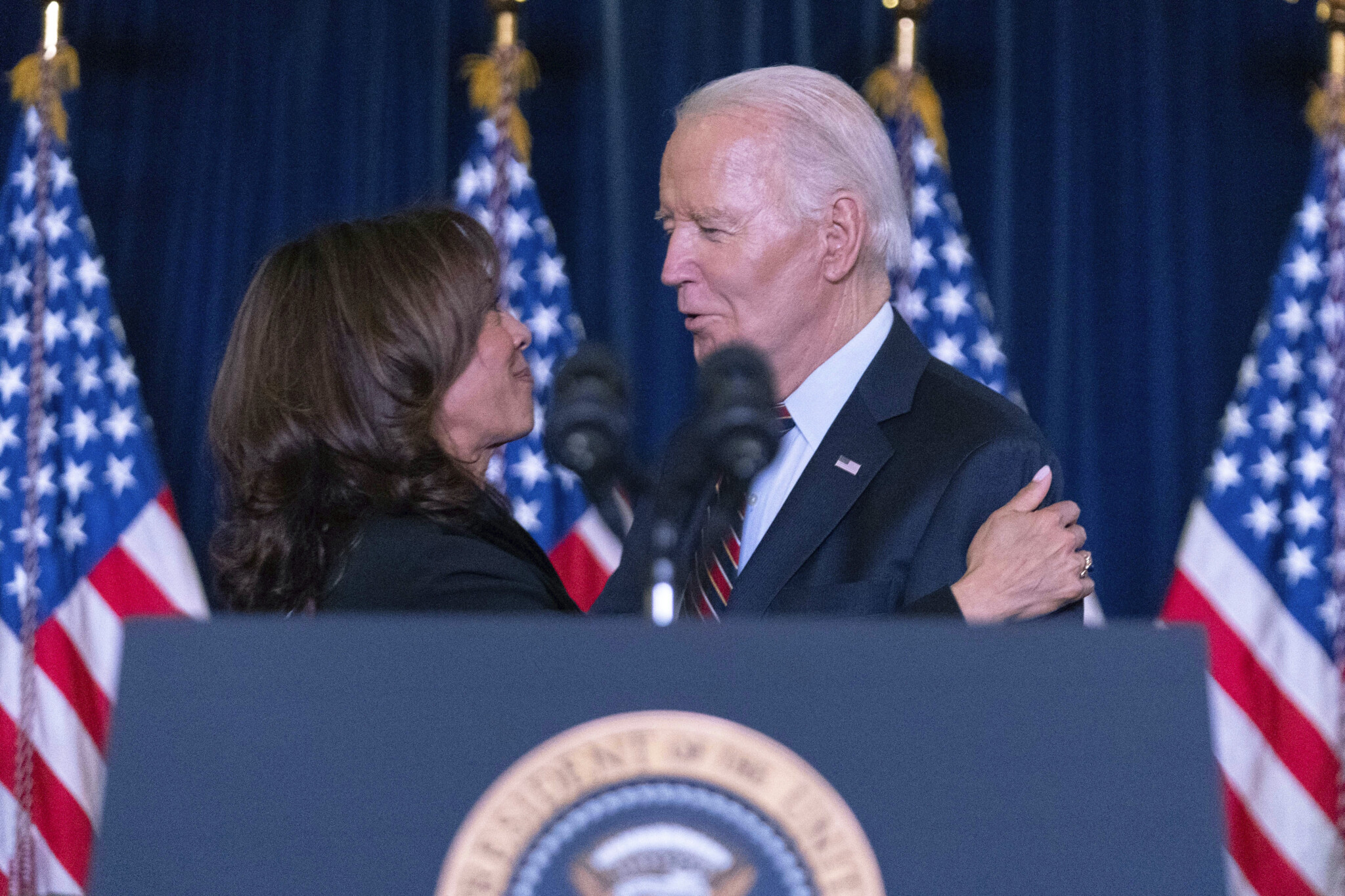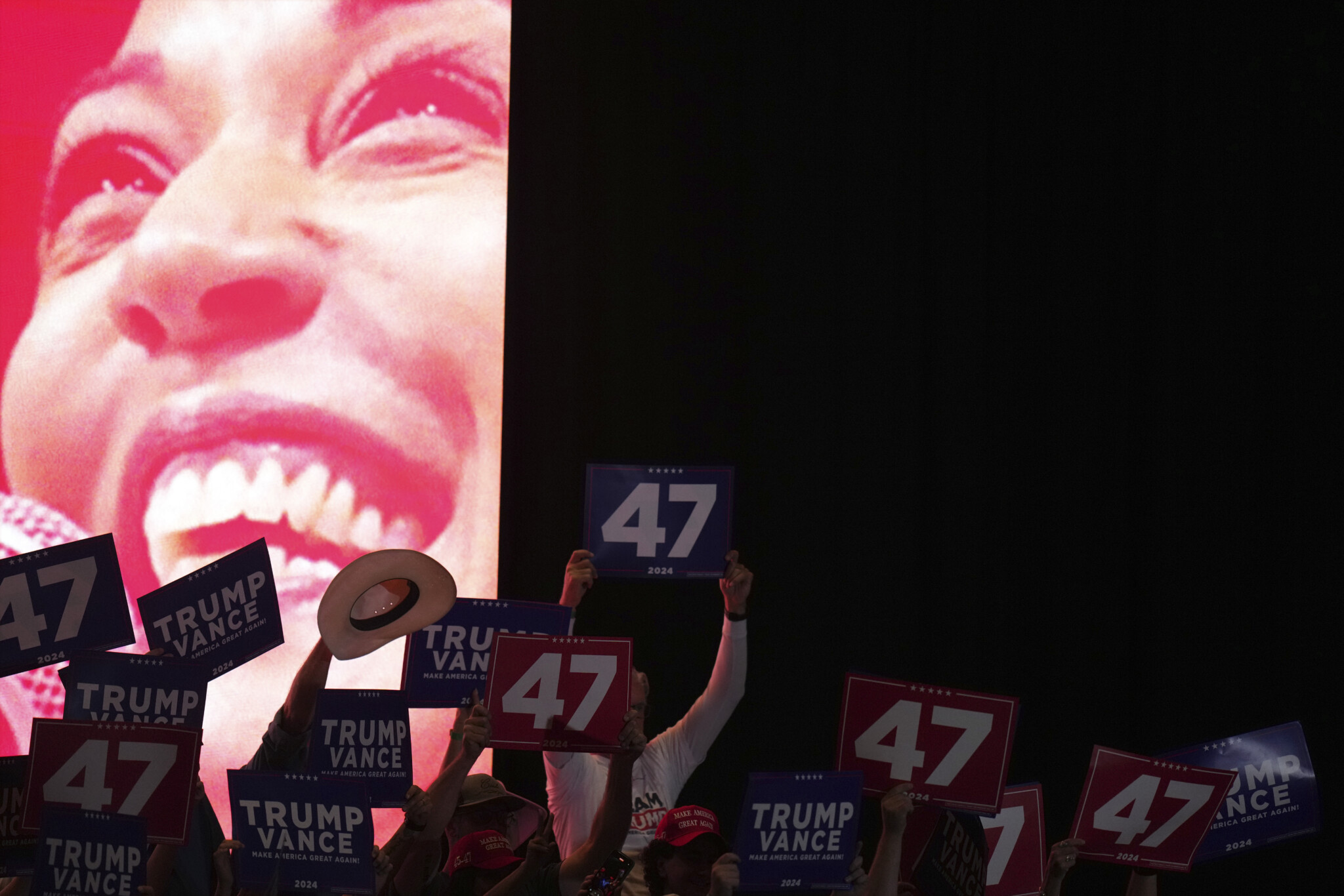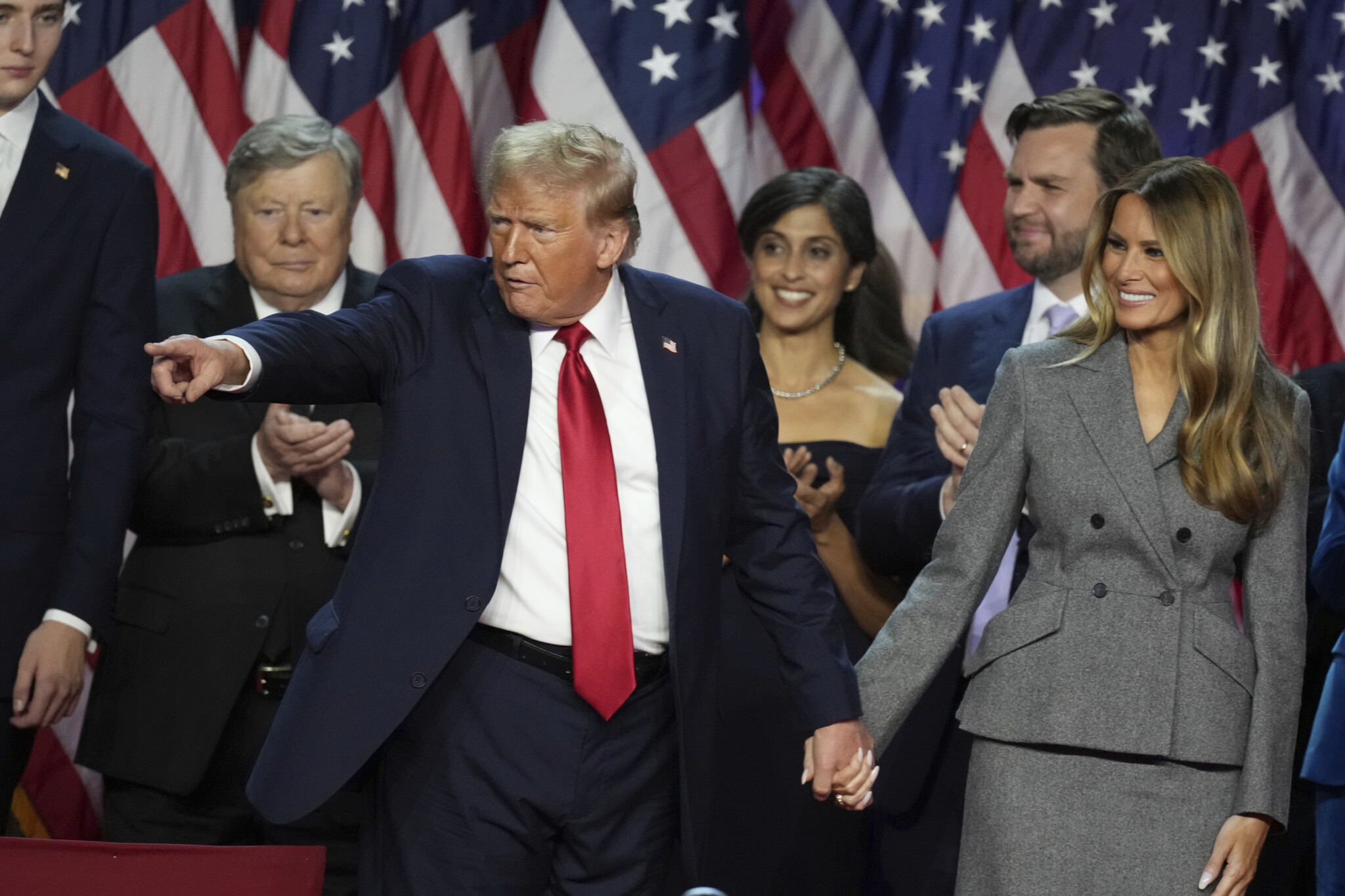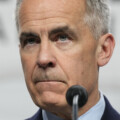The 2024 American election has come and gone, but the extent of its impact, not only on the U.S. but the world at large, is still being worked out. A momentous turning point, it is worth reflecting on how the election unfolded and what it all means moving forward. The following retrospective analysis is part two of a two-part series. You can read part one here.
The election
As detailed in part one of this series, Kamala Harris’ makeover recast her as the Democratic Party candidate to welcome once Joe Biden had been shuffled off stage. More precisely it cast her as the candidate of—wait for it—joy. Really, party professionals? Harris might have been called many things in the course of her long career, but a bringer of joy wasn’t one of them. To package her as such betrayed the party’s desperation to craft an appeal for her both positive and non-ideological. Joy was both of these. Yet at the same time, it was awfully vague. To present Harris as its candidate implied nothing at all about the policies to be expected of her. About these, she remained largely reticent throughout the campaign. The particular issue which she counted on to win her the most votes was abortion. Joy seemed a misnomer for it. But nor did there seem much joy to be distilled from the issues hampering her candidacy. Inflation? The border? Perhaps joy was best understood as a distraction from these.
Harris’ supporters cast her supplanting of Biden as a success for both her and the party. In some respects, it was indeed such. Major donors, who had tightened their pursestrings after the exposure of Biden’s infirmities, loosened them again and the money gushed out. (In the end, the Democrats would massively outspend the Republicans.) So did outpourings of grassroots enthusiasm. The Harris campaign cast this as delight with her, although obviously it was compounded in part by deep relief at Biden’s exit and deep apprehension over Trump’s possible return. Still, there was no denying that her approval ratings were now significantly higher than Biden’s had been. This confirmed her prospects as rosier than his would have been.
Similarly, Harris’ first and only debate with Trump also seemed to go well for her. Virtually all neutral observers proclaimed her the decisive victor, and she received a bump in the polls. Trump’s inner circle briefly panicked, convinced that he had blown the election. Much to their surprise and relief, however, Harris’s bump subsided, and the polls returned to their previous deadlock.
Five weeks after Harris’ coronation, the challenges facing her remained stark. Despite the enhanced approval ratings, her standing with working-class voters was the worst of any Democrat in modern history. Obama had lost the white working class by 20 points in 2012, and Biden lost them by 26 points in 2020. Polls now placed Harris’ deficit at a whopping 36 points. Worse, among nonwhite working-class voters, whom Obama had carried by an overwhelming margin of 67 percent, hers was a mere 30 percent. Forty-one percent of Hispanic voters were declaring that they backed Trump. Harris also trailed among male voters by a much wider margin than she led among female ones. Despite the continuing (and perplexing) deadlock in the overall polling numbers, these figures boded a victory for Trump.
As the final result would confirm, the Harris campaign never did succeed in closing the gap with Trump. The politics of joy proved largely anodyne and platitudinous. Whatever you thought of Harris, you had to sympathize with her dilemma as a candidate, and to that extent with her attempted makeover. She had to distance herself alike from the centrist but unpopular Biden administration and from her own inconveniently leftist past. And she had to do so without alienating any significant constituency within the party. If you want a two-word expression for the impossibilities of the triangulation she was attempting, I would suggest: “Gaza war.”
If there was any substance to the makeover, it was that on a variety of contentious issues Harris now avowed more centrist positions than she had held in the past. While fraying her ties with the party’s Left, there was nothing novel here, but a time-honoured strategy of American politics. There were two problems with it, however, both of which Trump’s campaign exploited. The first was posed by her leftist past. All the Trump team had to do to evoke it was to play clips of her earlier statements. Referencing her position on transgender issues, they contrived a brilliant slogan: “Kamala is for they/them while Trump is for you.” There you have it: the populist culture wars in ten words, nine of them monosyllabic.
In responding to these attacks Harris committed one of her few unforced errors. When asked to explain why her positions had changed on so many issues, she replied that her values had remained the same. This answer won her few friends. Just what were those values, exactly? Her selection as running mate, Minnesota Governor Tim Walz, presented the same difficulty. As a congressman from a conservative rural district, he had hewed to the centre. Subsequently, as governor of a progressive state in which the Democrats controlled both chambers, he had tacked predictably to the Left. His style was folksy and avuncular, but what was the reality behind it?
The second problem exploited by Trump’s people was of course Harris’ prominence in the Biden administration. A second statement of Harris’ underlined the dilemma that this strategy posed for her. Asked whether there was anything the Biden administration had done that she would have done differently, she replied that there was not a thing. That would have been a good answer for a vice president running on her president’s successful record, but Harris was not that vice president.

Vice President Kamala Harris, left, speaks with President Joe Biden at the Democratic National Committee’s Holiday Reception at Willard Hotel in Washington, Dec. 15, 2024. Jose Luis Magana/AP Photo.
While newly espousing centrist positions she had also cast herself as an agent of change, this to create distance between herself and Biden. Perhaps this latest answer was a demonstration of a commendable loyalty to him; perhaps it reflected the political calculation that there was no percentage in criticizing an administration in which she had been so complicit. Whichever, the answer was confusing and politically ineffective. By that afternoon, up to 10 million voters received text messages containing the clip on their cellphones, courtesy of the Trump campaign. Television ads broadcast it to tens of millions more over the following weeks. Play as she might by the new script, It proved impossible for the party to rescue her alike from her Left-leaning past and from her entanglement with Biden.
In the meantime, however, the makeover of Trump had fizzled. He behaved like the Trump of 2016 or 2020, if not even more so. Whether from disinclination or sheer indiscipline, he would not stick to the new more moderate script. He rambled, he thundered, he threatened, he insulted. He persisted as everything that his core loved but most other Americans loathed. Paradoxically, however, Trump can be said to have remained on point, if we grasp that his vaporous meanderings were the point for so many of his supporters.
As for the campaign, while its makeover of Trump may have failed, it had a fallback position. While it ended up letting Trump be Trump, it pursued a strategy that was both complementary to his and far more disciplined. Eschewing the ground game of the Democrats (which in any case it had no hope of matching), it invested vast sums in social media. In this, it benefitted from the guidance of a shiny new Trumpist, Elon Musk. While Trump had refused a second debate with Harris, he appeared for nearly three hours on Joe Rogan’s A-list podcast. He thereby reached a vast audience rich in members of his target group: younger males. (While the Harris campaign gambled by going all out for women, the Trump campaign gambled by going all out for men. Hence the prominence in the campaign of the likes of wrestler Hulk Hogan.) The podcast was watched on YouTube some 45 million times. Perhaps because of Rogan’s obvious sympathy for him, Trump was on his best behaviour that day. He appeared thoughtful and reflective. In the campaign as a whole, however, Trump succeeded not because of the success of his makeover but despite its failure.
So the Harris makeover was largely successful in that she stuck to the new script, while Trump’s was a failure in that he could not be bothered to do so. Yet the Harris makeover failed inasmuch as the Trump campaign kept reminding voters of the Harris that had been, while the Trump campaign succeeded despite his failure to play nice for it.
What Trump’s victory means
At this point, you may want to ask what Trump’s victory means. Isn’t that what we intellectuals and pundits are supposed to do, explain what things mean? Yes, and beware of cheap answers to that question. Nothing important in the political world happens for just one reason, and every one of its multiple reasons discloses a different strand of meaning (or of meaninglessness, as the case may be).
What then were the reasons why Trump proved the stronger candidate? Here we would have to begin by listing the popular complaints against the Biden administration; these we have canvassed above. The election need not mean more than this: voters rejected Harris because of the burden of her incumbency. If that is all that it meant, then its outcome would imply no more for the future than that Trump would be well advised to address these complaints.
I spoke recently to a younger voter who described himself as independent. He argued that this election was little different from earlier ones. Most democratic elections are referenda on the incumbent; this one was no different. He contended that among the American people, there are supermajorities on the following issues: the state of the economy (including inflation); the border and immigration; crime; and wokeness. Of these issues, only the last was at all new, and in every case, the supermajority of consensus boded ill for the Democrats.
First: the economy, the issue that most voters mentioned as their prime concern. Whatever economists had to say about it, a majority of Americans had experienced the economy of the Biden years as bad. They responded as Trump had anticipated in asking a la Ronald Reagan whether they were better off now than they had been four years ago. Yes, as the economists told us, America’s booming economy was the envy of the rest of the world. And yes, growth and the markets were up, and inflation was down. Still, due to the failure of wage increases to keep up with the galloping inflation earlier in Biden’s term, most working-class Americans found themselves decidedly worse off.

People hold a flag as President-elect Donald Trump arrives at UFC 309 at Madison Square Garden, Saturday, Nov. 16, 2024, in New York. Evan Vucci/AP Photo.
Second: the border and immigration. These are complex issues, and Americans disagree vigorously over them. Still, as my informant suggested, there is a general feeling of insecurity abroad, a sense that under Biden the border and illegal immigration had slipped out of society’s control. This unease was shared by many legal immigrants, including Hispanics.
Third: crime. A supermajority of any healthy people are against it. Whether crime rates are up or down, crime is something people will worry about. And this worry is closely linked to that over illegal immigration. No doubt Trump exaggerated, shamefully, disgracefully, and demagogically, the prevalence of violent criminals among illegal immigrants. Still, precisely because the number of illegals in the country was so huge, there were many convicted felons among them, a fact on which Trump knew to harp.
Lastly: wokeness. Here again, people may have disagreed as to what it was, but a supermajority was against it. I recently read an argument by a highly defensive Democrat that it cannot have been this issue that cost his party the election. Harris had not run as some flaky woke Democrat but as a middle-of-the-road bread-and-butter one. While true, this last fact was not decisive. As we have seen, the Trump campaign persisted in reminding voters of Harris’s past. Nor, as we have also seen, could she emphatically repudiate that past without alienating her core voters. The Democratic Party had a brand, and wokeness was a big part of it. No candidate could have escaped guilt by association with it, but least of all one from California.
True, few voters listed these niche issues as among their top concerns. It would be a mistake, however, to conclude that they did not hold them against the Democrats. The party’s alleged preoccupation with such issues was exhibit one of Trump’s efforts to paint the Democrats as out of touch with ordinary people. Again, Kamala was for they/them, while Trump was for you.

A message about Democratic presidential nominee Vice President Kamala Harris appears on a video screen as supporters arrive before Republican presidential nominee former President Donald Trump speaks at a campaign rally at Grand Sierra Resort and Casino, Friday, Oct. 11, 2024, in Reno, Nev. Jae C. Hong/AP Photo.
In focusing on these four issues—the economy and inflation, the border and immigration, crime, and wokeness—as central to the outcome of the campaign, we can see that this outcome was a relatively ordinary one. Or to put it another way, while it might seem extraordinary that Trump won, it should not seem unusual that Harris lost. As Hubert Humphrey had worn the collar in 1968 for the Vietnam War which as Lyndon Johnson’s VP he had no choice but to defend, so Harris failed to extricate herself from the morass of an unpopular status quo.
Expanding our search for meaning to the broader context of the election, we would have to grasp the phenomenon of Trumpism as such. Here of course the word on every tongue is populism, a term with a broad range of meanings. If it implies the pervasiveness in a society of a popular mistrust of elites, it certainly applies to the present case. Yet if by populism we mean the populism of the Right whose standard Trump bears, then two words of caution are necessary.
The first is that insofar as the success of his movement depends on Trump himself, we cannot predict its fate once he passes from the scene, as both law and nature will soon bid him do. No obvious successor looms.
Our second caveat, however, will serve to qualify the first one. We cannot blame the rightward shift of the American working class entirely or even mostly on Trump. It is a trend that goes back to Richard Nixon if not to Dwight D. Eisenhower. To begin with, those who so shifted were mostly southern and white, but they now suffuse the entire nation and include many blacks and Hispanics. When pundits raise the question of whether this latest election represents a realignment, it is this shift that they have in mind. Step by step the Republicans have been busy dismantling the New Deal coalition.
Simply put, America’s workers no longer credit that they are front of mind for the Democrats. Thoughtful Democrats of my acquaintance agree with them, much to their own chagrin. Among public intellectuals sympathetic to what the Democrats used to stand for, none has made the case against them more eloquently than Michael Lind. According to him, today’s Democrats are the party not of American workers but of the global managerial-technocratic-academic elite. Yet at the very least Trump deserves credit for his success at accelerating the shift of working-class support to the Republicans.
I am not a numbers cruncher, but according to the crunchings of others, Trump’s victory was one of turnout. Yes, the Harris campaign prided themselves on their ground game. They had hired 2,500 workers and opened 358 offices across the battleground states. On the final weekend of the campaign, some 90,000 Democratic volunteers knocked on more than three million doors. In crucial Pennsylvania, the pace reached a thousand doors a minute. Even so, in one Democratic stronghold after another, the turnout for Harris was lower than it had been for Biden. In Republican ones, conversely, the turnout for Trump was stronger than it had been in 2020. Every group save for college-educated whites voted less heavily for Harris than they had for Biden four years before. Almost every county in America shifted to the Right—by an average of just 1.7 percent, but that was enough to ensure Trump’s victory. So while his win wasn’t sweeping, we might describe it as pervasive.
As already mentioned the white working class has been forsaking the Democrats for some time now. Shocking, however, was Trump’s inroads among the non-white working class. That 20 percent of black voters opted for Trump—as opposed to 13 percent in 2020 and just 6 percent in 2016—might not sound like enough to have decided the election. But couple it with lower-than-expected turnout among black voters generally, and this was a double whammy for the Democrats. It killed them in the three “Blue Wall” states, all of which Biden had won and all of which Harris lost. Stunning was the Hispanic vote of 45 percent for Trump. If these trends persist beyond Trump the Democrats are in deep trouble.
Crucial to the outcome in this confrontation of such weak candidates were the so-called “double haters” averse to both. Although fewer voters hated Harris than had hated Biden, about 8 percent still fell into the double hater category, more than enough to decide a race as close as this one. You might think that if such voters bothered to vote at all they would split their votes rather equally between the candidates. In fact, according to exit polls, they voted overwhelmingly for Trump, by a margin of 23 percent, according to one survey, by 14 percent according to another. In North Carolina, a state where Democrats had nurtured a fantasy of winning, double-haters broke for Trump by a margin of two to one. The depth of this aversion to the Democrats among so many voters unimpressed by Trump is bound to keep party leaders up at night.

Nikki Fuller, 56, sets up flags on her truck near the Mar-a-Lago estate of President-elect Donald Trump, Monday, Nov. 11, 2024, in Palm Beach, Fla. Julia Demaree Nikhinson/AP Photo.
Three particular issues were difficult to quantify but impossible to ignore. The first two were racism and misogyny. There is no telling how much voter resistance to Harris depended on these, but not the least of Trump’s malign influences on American politics was his implied permission to indulge them. As for Gaza, a New York Times poll in May found that of voters in the six swing states who had supported Biden in 2020 but would not do so in 2024, 13 percent declared it as their reason. Clearly this must have hurt Harris: the war had put the Democrats in an impossible position. No help from any makeover here.
In the end, this was still a close election. The margin in the popular vote—just 1.5 percent—was smaller than in any tally since the deadlock of 2000. If it seemed more sweeping than it was that was because it was so surprising that a Republican could win the popular vote at all (none had done so since 2004), because Trump won all the contested states, and because throughout the country the drift of the electorate was rightward so that from quite early on election night the outcome was not in doubt. Also, of course, because the Republicans won both houses of Congress, although the House only very narrowly. But despite Trump’s plurality of the popular vote, he did not win a majority of it. Most American voters opposed him, and he could boast of no coattails. He should not make Biden’s mistake of assuming that he enjoys a mandate.
He looks to be making that mistake, however, by pushing ahead with policies bound to incur determined opposition. Understandably Trump’s triumph has evoked many jeremiads. A venerable genre, but not mine, so I will leave it to others.










